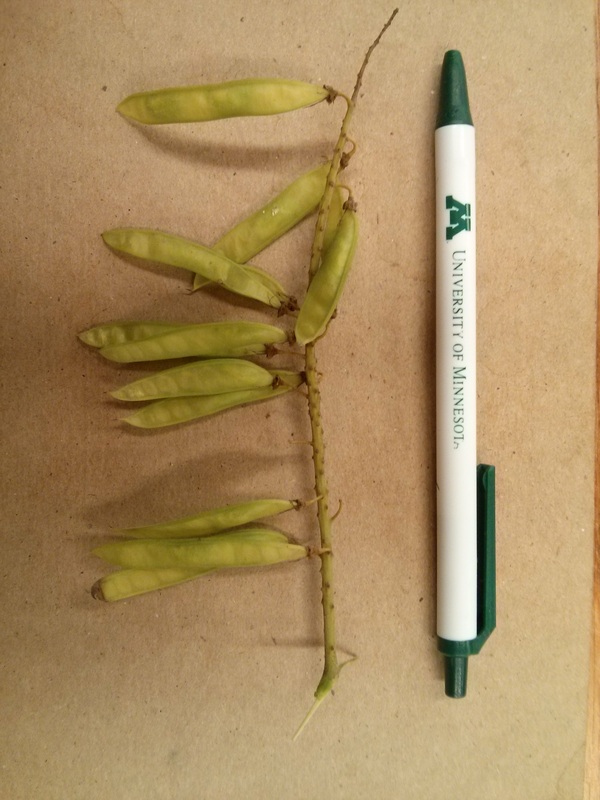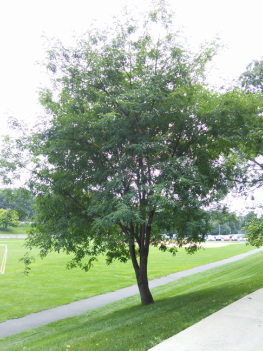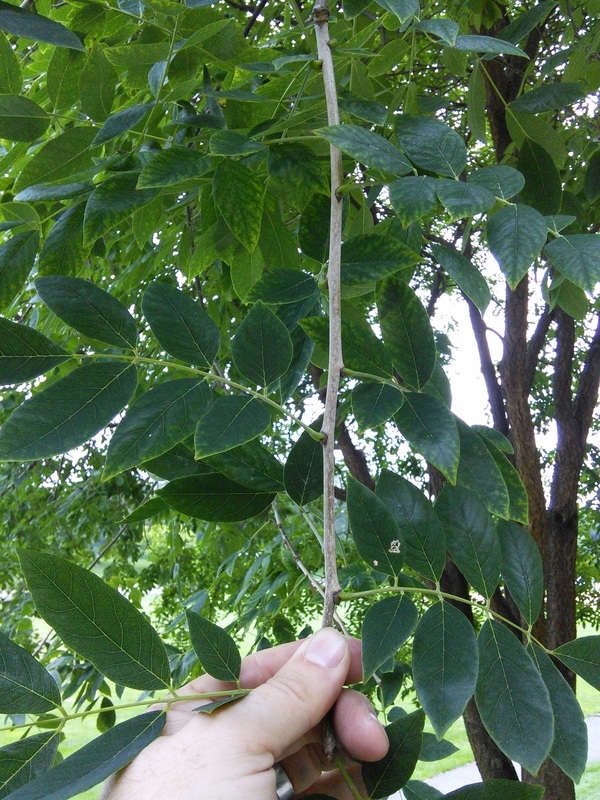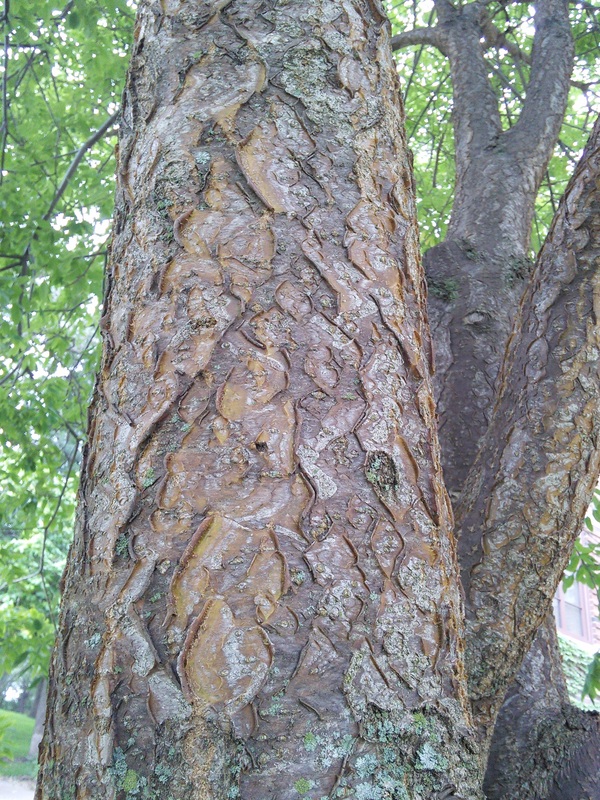Amur Maackia
Amur Maackia (Maackia amurensis) cannot be found naturally growing in the United States. The small to medium sized tree grows toward 50 feet in height. The species is native to eastern Russia, northeastern China, Japan, and the Korean peninsula (Meyer). Amur maackia is planted in urban areas because of its unique appearance and stress tolerance to both flooding and drought conditions (Meyer). The bark of the tree is described by some as “zombie skin” because of its amber color, peeling texture, and green undertones. The wood of the tree is very hard and resistant to rot (Meyer).
As suiting a member of the legume family (Fabaceae), Amur Maackia has ½” white flowers that resemble those of a pea plant but grow in long clusters like a bunch of grapes on a structure known as a raceme. The flowers can be seen emerging around mid-July. The buds are smooth and dark brown, and the fruit of the tree is a 2-3” pod. The tree’s pinnately compound leaves are 8-12” long with 1 ½ - 3 ½” dark green, oval, smooth-edged leaflets. The leaves of the tree have a silky pubescence giving it a silvery appearance (Meyer).
Maackia amurensis is able to fix nitrogen from the atmosphere through a symbiotic relationship with bacteria from the Bradyrhizobium genus. Nodules form on the tree’s roots where the bacteria have penetrated through the root hairs into the main root. The bacteria benefit by receiving carbohydrates from the tree while the tree is able to utilize the fixed nitrogen in the form of ammonia or ammonium. Tree roots can be inoculated with compatible Bradyrhizobium isolates to ensure that nitrogen fixing will occur (Giridhar et al.). The ability of this tree to coexist with a nitrogen fixing bacteria may be a factor in its tolerance of harsh conditions.
The seed lectins of the tree are used in the field of glycobiology (Geisler & Jarvis).
Citations:
Geisler, C. & Jarvis D. (2011) Effective glycoanalysis with Maackia amurensis lectins requires a clear understanding of their binding specificities. Glycobiology, Vol. 21 no. 8 pg 988-993, 2011.
Giridhar J., Pai B., Graves R. (1995) Influence of Inoculant Form and Applied Nitrogen on Growth and Root Nodulation of Maackia amurensis. Journal of Environmental Horticulture 13(1): 40-42
Meyer P. (2010) Amur Maackia Maackia amurensis. Arnoldia Vol. 68 Number 2.






